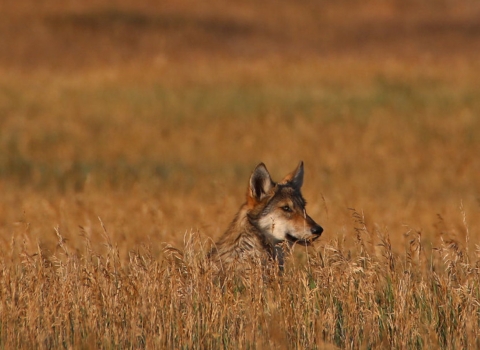DENVER — Following the November 2020 passage of a statewide ballot initiative to reintroduce wolves in Colorado, the U.S. Fish and Wildlife Service is announcing the availability of the final environmental impact statement and draft record of decision to establish an experimental population of gray wolves in Colorado under section 10(j) of the Endangered Species Act. Once finalized, this action will provide management flexibility in support of Colorado’s voter-mandated gray wolf reintroduction program.
Colorado Parks and Wildlife Commission intends to reintroduce the gray wolf in a portion of the species’ historical range in Colorado by Dec. 31, 2023. CPW requested the designation of an experimental population under section 10(j) of the ESA to provide the state with increased flexibility to manage wolves when they are reintroduced in Colorado. CPW completed and published a Final Wolf Restoration and Management Plan for reintroducing the species. The state management plan provides for differing management tools based on achieving recovery targets. As the state achieves these recovery targets, tools available to the public under state laws and regulations may be more restrictive than what is allowable under the Service’s proposed federal rule.
Today’s announcement is the result of extensive coordination and outreach among many partners in Colorado at the local, state, federal, and Tribal levels. The Service also conducted public information meetings during the scoping process and published a draft 10(j) rule and draft EIS for public comment. The Service reviewed more than 20,000 comments as part of this public participation effort. The FEIS and draft ROD reflect the input received throughout the scoping and public comment process, as well as feedback from cooperating agencies and Tribes. The final versions of these documents primarily clarified language and definitions.
The FEIS and draft ROD were produced in compliance with the National Environmental Policy Act. The Service will implement proposed “alternative 1” from the scoping and draft process; this alternative proposes approval of a 10(j) experimental population designation. A 10(j) experimental population rule will allow the Service to provide designated management flexibility to the state for reintroduced gray wolves in Colorado. This management flexibility can help ensure co-existence between wolves and affected landowners contributing to the conservation of the species while reducing the potential impacts of reintroduction to stakeholders.
Learn more about 10(j) rules and experimental populations on our website.
The Service will issue a final ROD and 10(j) experimental population designation no sooner than 30 days after this announcement is published in the Federal Register. A 30-day notice period is required between the publication of the draft ROD and final ROD.
Additional information, background, and frequently asked questions about the experimental population designation can be found at https://www.fws.gov/coloradowolf. More information from CPW regarding their reintroduction of gray wolves can be found at https://cpw.state.co.us/learn/Pages/CON-Wolf-Management.aspx.






